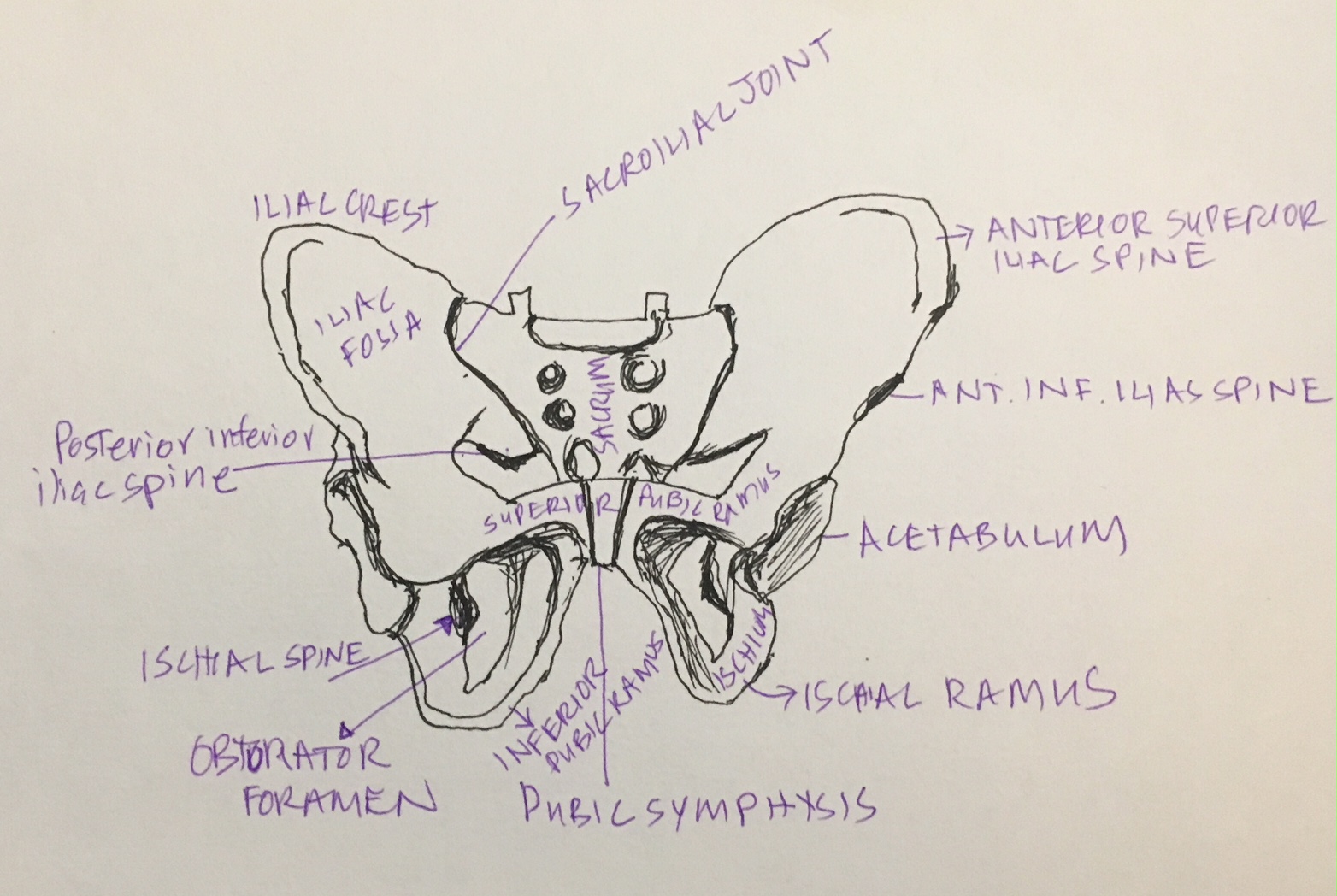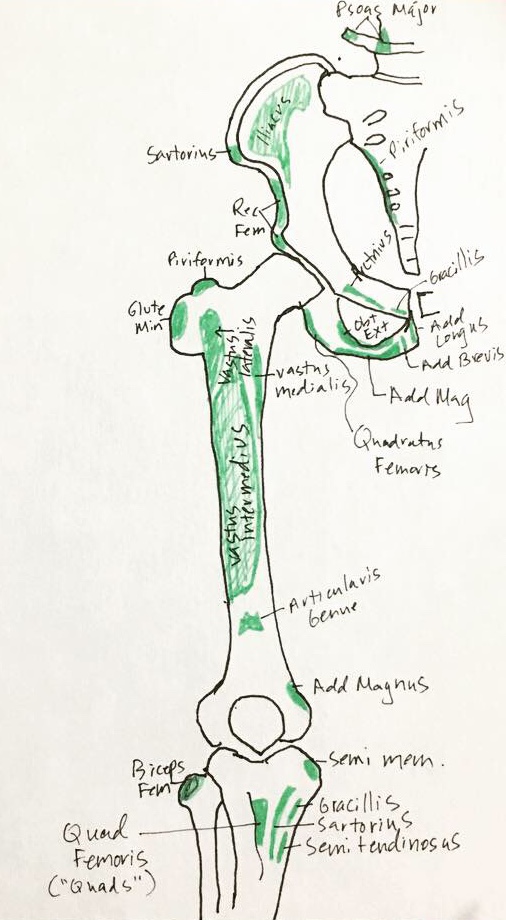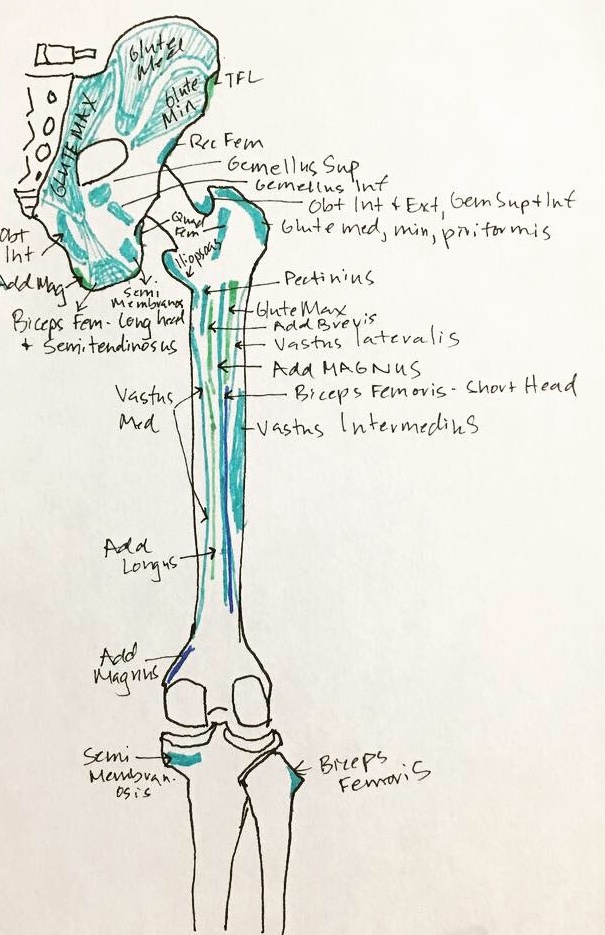A friend of mine recently asked what apps I use for school and how I keep myself organized. As I typed up a massive text to her, I was realized this kind of info is better relayed via blog post where I can be my typical wordy self. 🙂
A little bit of background on where I am coming from. When I turned 40, I decided to move to Florida (with my long-suffering husband) and go to school for massage therapy. But not just any massage therapy – I chose to attend a neurosomatic therapy training program that consists of an intense 18-month course where you learn about all the organs, muscles, and systems of the body and how to treat all of them.
My BA in Accounting and MBA did not quite prepare me for this program. Also, being out of school for years and years also did not adequately prepare me for this program. Also, being 40-years-old and accustomed to nice things like organic food, eating out, and cars that do not break down every week meant that I wanted to continue working while going to school, which meant I would not have a ton of time to study. So I was on the struggle bus when I first started!
Here is how I managed to make it through 3/5 of the program whilst working 26 hours/week: organization and apps!
- Pomodoro Blocks. I was introduced to this concept while listening to this book. The pomodoro technique involves working for 25 minutes (completely focused) and then taking a short 3-5 minute break. After completing 2 or 3 pomodoro blocks and breaks, you take a longer break of 30 minutes. This approach was invaluable to me. I would tell myself, “Heather, just 25 minutes. Just do 25 minutes of studying. Then you can look at Facebook or Instagram or eat some chocolate and almond butter. Just get in your 25 minutes.” And I did! Breaking up work into small chunks like this made it more manageable and helped reduce my severe procrastinative tendencies.
- An adjunct to the pomodoro block is my Brainwave binaural rhythms app. This is an app that shoots frequencies into your ears (via headphones) to sync your brainwaves to a specific goal. I would set the app to Memory Boost, set the timer to 25 minutes, and start studying.
- Essential Anatomy. This app is so helpful for getting a 3 dimensional view of muscles and understanding the layers of muscles.
- Voice Record Pro. For my first 1.5 semesters I used Voice Memos to record the anatomy lectures. Then one of my fellow students told me about this program, and it CHANGED MY LIFE. Ok, maybe a little dramatic there. But this really is an awesome app for recording lectures. You can easily skip forward or back 10 seconds, you can speed up playback, you can set bookmarks. HUGELY useful!! We learn in school that you need to hear something 7 times to remember it. So hearing the info in class, writing up flashcards on the material, and then listening to the lectures again (while walking outside each morning), means I’m about 1/2 way there.
- Flashcards brings me to the next point: Quizlet. I personally prefer to use paper flashcards, because I learn better when I write and draw out things versus typing them. But for people who like electronic flashcards, I’ve heard great things about Quizlet.
- Bullet Journal. I have experimented with a few other planners – the Passion Planner, Panda Planner, etc. But I couldn’t find one that had the flexibility I wanted. So I created a Bullet Journal. This is my second iteration of it, and I really like how it works. I set up one page with the whole month listed on it, and then each day gets 1/2 a page. I separate each day into two vertical columns. The larger column on the left is where I put the list of things I want to get done. Completed items get a line through them, and items that need to be moved to the next day get a <. In the right-hand column, I put my major goals for the day (e.g. meditation, study, reminders to slow down, etc.). I also recently started a section where I track the “language of the world” as I understand it from The Alchemist. These are numbers, creatures, synchronicities I see in the world that make me feel as if I am on the right path. This structure gives me flexibility, and all the blank pages in the back give me lots of room to track the other random stuff I need t0: meanings of numbers, ideas for workshops, goals, reminders on how to build confidence, trainings I want to take, things I want to draw, etc. It’s a good brain dump location. Here are some pics:
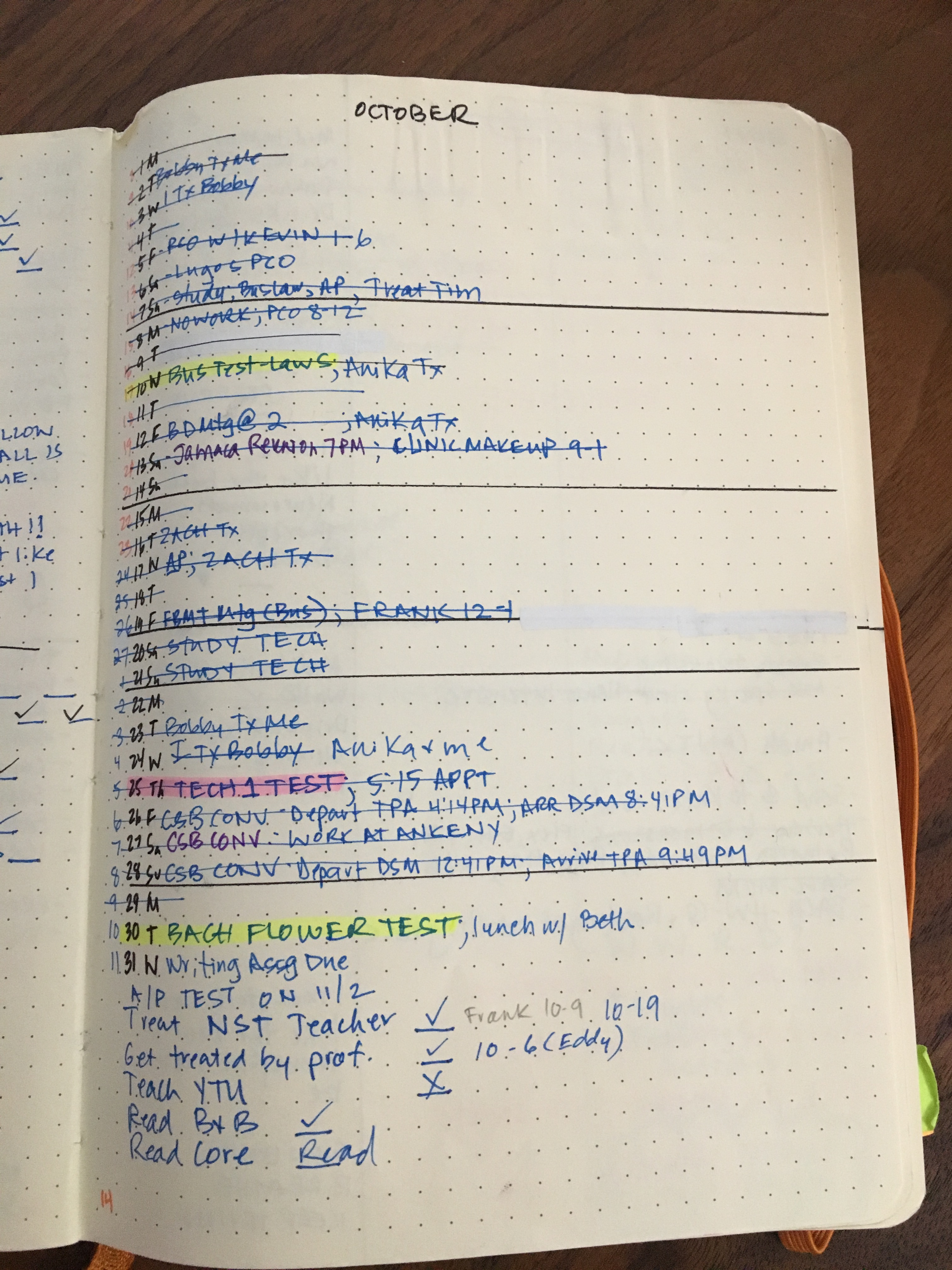
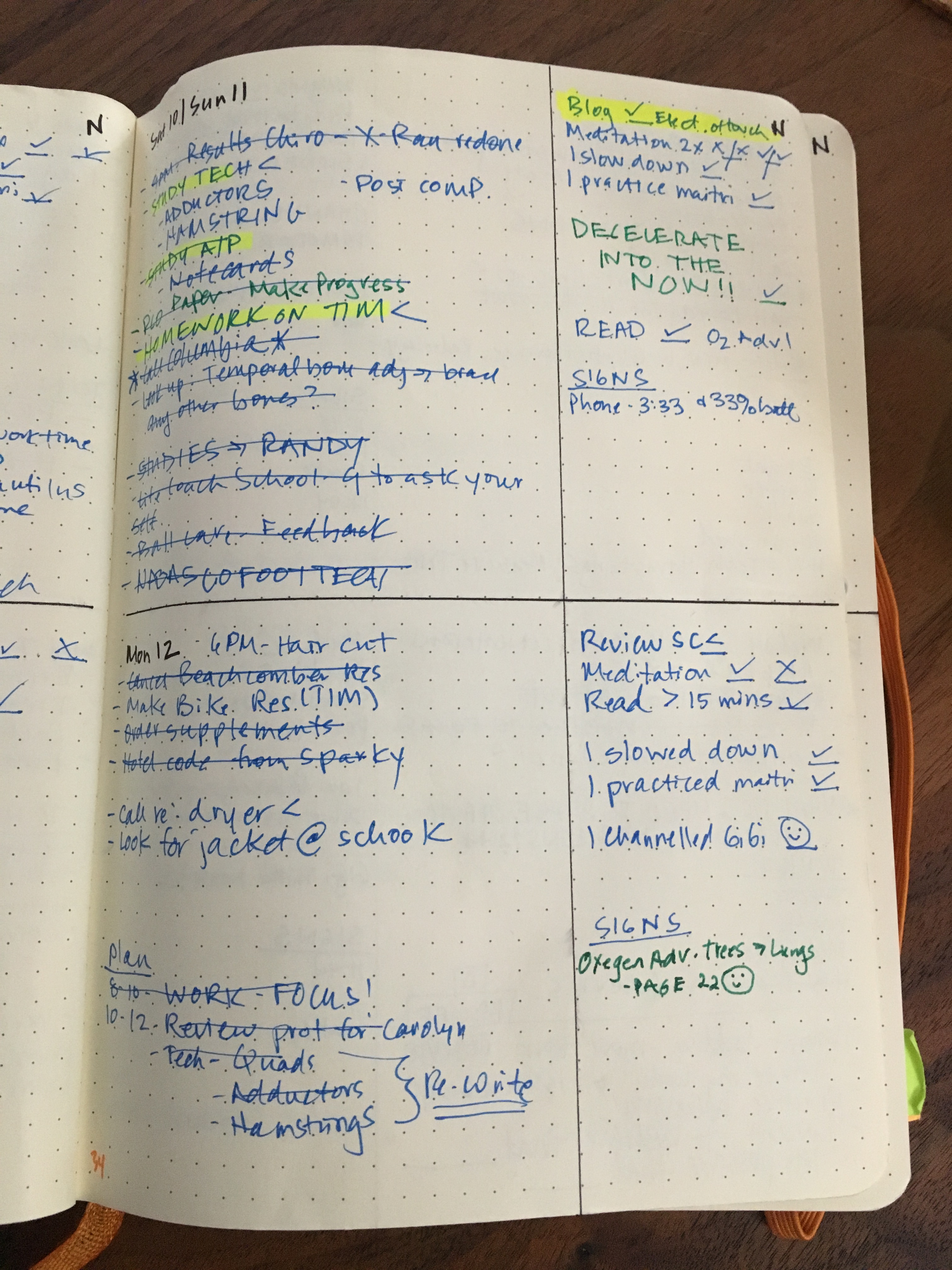
I have about 2.5 months left of school, so hopefully these tools see me successfully through to the end. Let me know if you have any helpful study tips! Do you use a Bullet Journal? If so, what helpful hints do you have? What study/memory tricks work well for you?
Thanks for reading, and chat with ya’ next week!!

